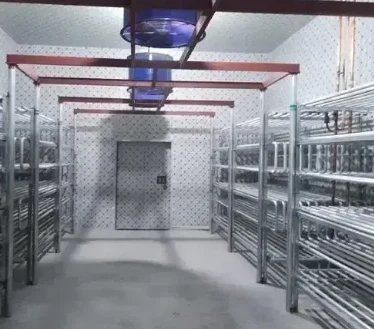Cost Analysis of Walk-In Coolers and Freezers for Businesses
The Cost of Walk-In Cooler and Freezer Installation A Comprehensive Overview
In the food service and retail industries, maintaining the right temperature for perishable goods is critical. Walk-in coolers and freezers offer a space-efficient solution for storing large quantities of products while ensuring freshness and safety. However, the cost associated with these installations can vary widely based on several factors. This article explores the key components influencing the overall cost of walk-in cooler and freezer installation, helping business owners make informed decisions.
1. Size and Configuration
One of the primary determinants of cost is the size and configuration of the walk-in unit. Walk-in coolers and freezers come in various dimensions ranging from small to large, with standard sizes typically starting around 6x6 feet to over 10x20 feet. The larger the unit, the higher the material and labor costs. Custom configurations, such as dual-temperature units or built-in shelving, can also add significantly to the total expense. Business owners should carefully assess their storage needs before opting for a particular size.
2. Material Quality
The materials used in constructing walk-in coolers and freezers affect their initial costs and long-term efficiency. Most units are made from insulated panels, which can be constructed from various materials including polyurethane, polystyrene, or stainless steel. Higher-quality materials often translate to better insulation, energy efficiency, and longevity, which can lead to cost savings over time. However, the upfront investment for these premium materials will be higher.
3. Cooling Systems
The type of cooling system installed is another significant factor influencing the cost. Walk-in coolers typically require commercial refrigeration systems, which can vary in complexity and efficiency. More advanced, energy-efficient systems might have a higher initial cost but will reduce energy consumption and operational costs in the long run. Additionally, businesses must consider whether they want an indoor or outdoor compressor unit, further impacting installation costs.
cost of walk in cooler freezer

4. Installation Costs
Labor costs can comprise a substantial portion of the total expense. Installation complexity varies with the layout of the kitchen or storage area, existing infrastructure, and local regulations. Hiring experienced professionals can ensure the proper installation of the unit, which is crucial for optimal performance. Business owners should obtain multiple quotes to ensure they are getting a competitive price for the installation service.
5. Permitting and Compliance
Depending on local regulations, obtaining permits can add to the overall cost. Compliance with health and safety codes is mandatory, especially for businesses handling food items. This might involve inspections and adjustments to existing systems to meet specific standards. Understanding local regulations beforehand can help avoid unexpected expenses down the line.
6. Maintenance and Operating Costs
While the initial investment is essential, ongoing maintenance and operating costs are equally critical. Regular maintenance is required to ensure the longevity and efficiency of the walk-in cooler or freezer. Factors such as cleaning coils, checking refrigerant levels, and ensuring proper seal integrity can incur additional costs over time. Moreover, energy consumption varies based on the unit's design and operating conditions, making energy-efficient models a wise investment for cost-conscious business owners.
Conclusion
The cost of installing a walk-in cooler or freezer can be significant, influenced by factors such as size, material quality, cooling systems, labor, permitting, and ongoing maintenance. While the initial investment may seem daunting, these units are vital for preserving product quality and enhancing operational efficiency in various businesses. To ensure the best return on investment, potential buyers should carefully evaluate their needs and budget, consider energy-efficient options, and work with reputable installers. Ultimately, understanding the total cost of ownership, including both initial installation and ongoing operational expenses, will empower business owners to make informed decisions that will benefit their operations in the long term.
















































































































